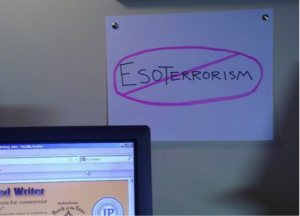So, a few months back, in the April 2011 Well-Fed E-PUB, I ran the following Main Course about retainers from Visalia, CA commercial freelancer Tim Lewis (tim@tlcopy.com, http://www.tlcopy.com).
Retainers – essentially a guaranteed monthly income from a commercial writing client – can be wonderful things. Not to mention especially welcome in a tough economy – and as you’ll see in Tim’s account, they’ll not only benefit us, but our clients as well.
Tim’s had some solid success with this strategy in building his own commercial freelancing business, and generously shared his experiences. Then it hit me that it’d make an ideal blog post – perfect for gathering input and experiences from all of you.
Frankly, I haven’t had much firsthand experience with retainers in my commercial copywriting practice, but if you have, I hope you’ll weigh in! Take it away, Tim…
*****************************************
Being a commercial freelancer can be more than just “per project†work. There’s a way to enjoy our fabulous lifestyle without worrying where your next check will come from. Setting up retainer-based agreements with clients is a great way to ensure consistent freelance copywriting income.
This is exactly what I did a few years ago when I said goodbye to the corporate world. Instead of hurling myself into the freelancing abyss without a safety net, I approached my boss with a unique proposition: I would resign my position as a hospital marketing director, but stay on as a consultant to help groom my replacement (my assistant). This way, she could learn the ropes and I could have the time I needed to build my copywriting practice.
It was a win-win for both parties. We agreed on a three-month contract that paid me roughly the same as I was making full-time. I had plenty of time to build a healthy business base while spending a few hours each week training my replacement and writing all of the communications pieces for the hospital. Plus, I could still pay all of my bills! The arrangement worked so well, I decided to approach some of my recurring clients with a similar proposal.
The response was tremendous. Because of the economy, many of my prospects (large hospitals) had laid off much of their marketing and communications staff. Since the work still needed to be done, they jumped at the chance to bring in an experienced hospital marketer/communications writer to help them get through this economic downturn.
As things start to pick up, many of my clients are realizing that my services fill all of their marketing needs, and at a fraction of the costs associated with bringing someone in full-time. Though I still do some one-off project work, my most productive partnerships are retainer-based consultant gigs.
How to get a client to agree to a retainer? Here’s how I approach it:
1) Every long-term relationship starts with a single project. Once you land it, knock it out of the park. Exceed your client’s expectations.
2) Once you’ve floored them with your talents and professionalism, follow up with a phone call. If they’re local, take them out to lunch. Ask if they have an ongoing need for writers. If so, pitch yourself as the solution.
3) If they’re interested, find out what their needs are, and what their budget is. From that info, craft a proposal detailing the services you’ll provide (e.g., blogging, web management, e-newsletters, etc.), the hours you can dedicate to them, and your monthly rate. The proposal doesn’t need to be some extensive legal document; one or two pages will suffice. If it’s a large company, they’ll most likely have you sign a legally binding vendor agreement. Read it carefully.
Make sure to include language in your proposal stating what will happen if you exceed—or don’t reach—the hours you’ve agreed upon. When the client has a light workload one month, I still ask to be paid in full (that’s the beauty of a retainer).
On the flip side, during busier months, I reserve the right to charge my hourly rate for excessive overages. Now, I have strong relationships with my retainer clients. As such, I will often not charge for a few extra hours here and there. However, when there’s an unusually heavy workload, I will let my client know that I’m approaching the cut-off and there might be some extra fees involved. That way, they can plan accordingly and either give me the go-ahead to move forward or hold off.
Also, revisions to your proposal should be expected while negotiating the agreement. Be prepared to be somewhat flexible with your rates and the hours you commit to. You may also want to start with a one-month contract to see how the partnership works, then make changes to the agreement down the road.
If negotiations aren’t as smooth as you’d like, be patient. Remember that this is a mutually beneficial situation––you’re guaranteed consistent income for an extended period of time and they’ll have dependable access to an expert in their industry.
If you’ve had experience with retainers, how did yours unfold at the outset?
How did you structure them?
Has the tougher economy opened doors to possible retainer scenarios?
Have you had retainers that didn’t work out well, and if so, what would you have done differently?
If you haven’t done any retainers, do you have some clients who might be a good candidate for such an arrangement?
Want to be a guest blogger on The Well-Fed Writer Blog? I welcome your contribution to the Well-Fed writing community! Check out the guidelines here.



